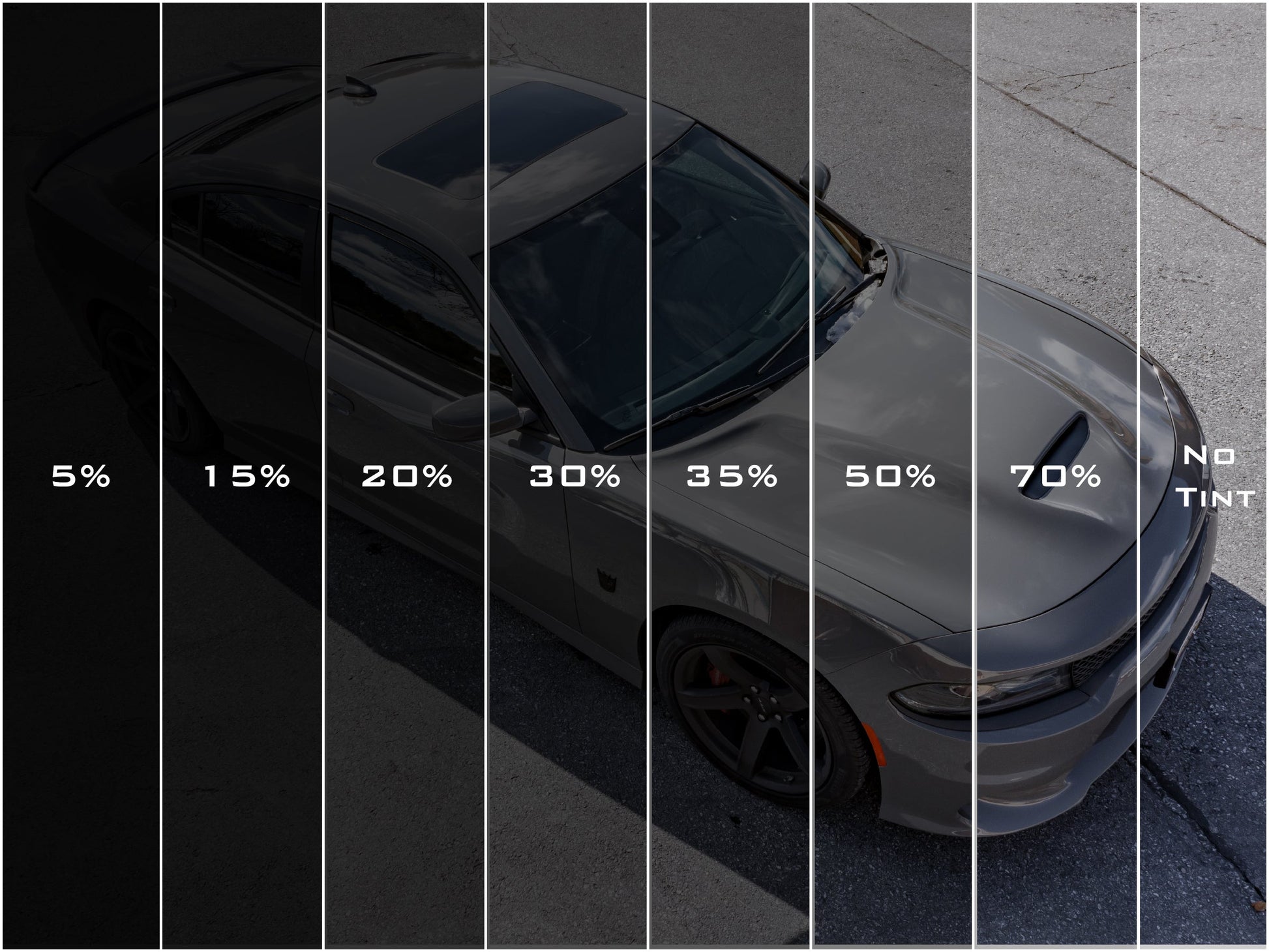Stay Cool and Comfortable: The Science Behind Window Tinting
Window tinting stands for an advanced interplay of materials science and useful application, functioning primarily through a thin movie that modifies the method light engages with glass. As we check out the various mechanisms and benefits linked with Window tinting, it comes to be obvious that its effect extends beyond convenience, affecting energy consumption and ecological sustainability.

How Window Tinting Functions
Window tinting runs via the application of a thin film to the glass surface area, which offers to change the way light communicates with the Window. This movie is normally made up of polyester or other synthetic products and is installed with various dyes and metals that influence light transmission and reflection. When light strikes the colored Window, a section of it is absorbed, while some is shown, and the remainder goes through.

Moreover, Window tinting can enhance personal privacy and reduce glow, making spaces a lot more comfy without jeopardizing presence. The efficiency of Window tinting differs based on aspects such as the kind of movie used, the angle of light occurrence, and the characteristics of the glass. Comprehending these concepts is vital for picking the appropriate color for details needs and atmospheres.
Advantages of UV Protection
One of one of the most substantial advantages of Window tinting is its capability to give effective UV security. Ultraviolet (UV) radiation from the sunlight is a well-documented source of skin damages, including premature aging and a boosted threat of skin cancer (AO Detail Window Tinting). By incorporating Window tinting, individuals can dramatically reduce their exposure to damaging UV rays, improving their total health and well-being
Top notch Window film can obstruct approximately 99% of UV radiation, developing a safer environment for residents. This security is especially helpful for those that invest expanded durations inside, such as workplace employees or homeowners in bright environments. In addition, UV direct exposure can bring about fading of indoor home furnishings, art work, and floor covering, leading to expensive replacements. Window tinting assists reduce these effects, protecting the aesthetic charm and honesty of interior areas.
On top of that, numerous Window film use a double benefit by minimizing glow, which can boost comfort and productivity. On the whole, the application of Window tinting functions as a proactive action to secure health and lengthen the life of treasured belongings, making it a sensible investment for both industrial and residential setups.
Temperature Guideline Mechanisms
Reliable temperature regulation is a critical advantage of Window tinting, as it contributes to a much more comfortable interior environment. Window film are created to reflect, take in, and transmit varying levels of solar energy, enabling a controlled monitoring of heat getting in a space. This important site guideline is primarily accomplished via the optical buildings of the tint, which can obstruct a significant portion of infrared radiation while allowing visible light to go through.
By lowering heat gain throughout warmer months, Window tinting aids maintain a steady interior temperature level, reducing the dependence on air conditioning systems. On the other hand, throughout cooler months, certain sorts of Window film can aid retain heat within the building. This twin capability guarantees that passengers experience consistent convenience regardless of external climate condition.
In addition, Window tinting can reduce temperature level variations triggered by straight sunshine, lowering the threat of hot areas near home windows. Because of this, the total indoor environment becomes more balanced, improving passenger satisfaction and productivity. The science behind these temperature policy mechanisms shows the significance of Window tinting as a functional option for enhancing living and functioning atmospheres.
Enhancing Energy Effectiveness
Energy efficiency is significantly enhanced via the application of Window tinting, more structure upon the advantages of temperature policy. By decreasing the amount of solar warmth that gets in a building, Window tinting reduces the reliance on cooling systems, causing lower energy intake. This not just contributes to reduced energy expenses however also decreases greenhouse gas discharges associated with power manufacturing.
In addition to warmth decrease, Window tinting also aids preserve stable interior temperatures, which can reduce the work on heating unit throughout chillier months. This dual advantage of regulating both warmth gain and loss results in a more reliable overall power performance for residential and industrial residential or commercial properties alike.
Furthermore, Window tinting can safeguard home furnishings and interiors from hazardous UV rays, which can cause fading and damage in time. By preserving the stability of interior spaces, homeowner can reduce the frequency of fixings and substitutes, additionally improving cost savings.
Inevitably, including Window tinting as component of an energy-efficient approach not just maximizes convenience however also promotes sustainability, making it a prudent investment for those wanting to enhance their energy footprint.
Choosing the Right Color
Choosing the ideal Window tint is vital for making the most of the advantages of this improvement. The choice of tint can significantly influence energy effectiveness, aesthetic appeals, and personal privacy. When taking into consideration Window tinting, it is crucial to evaluate the different types of film offered, including colored, metalized, and ceramic options.
Ceramic Window film stand for an exceptional option, incorporating superb thermal insulation with reduced reflectivity, therefore preserving a clear view. It is likewise crucial to take into consideration the legal laws concerning tint darkness in your location, as compliance is essential to stay clear of fines and ensure security.
Furthermore, assessing your details requirements-- such as UV protection, glow see it here decrease, and privacy-- will assist your choice process. Consulting with a specialist installer can provide valuable understandings and recommendations customized to your scenario. Eventually, the right Window tint equilibriums capability and appearances, contributing to an energy-efficient and comfortable environment.
Final Thought

Window tinting stands for an advanced interaction of products scientific research and sensible application, functioning straight from the source mainly via a thin film that modifies the way light connects with glass.Window tinting runs via the application of a thin movie to the glass surface area, which serves to change the means light connects with the Window. By integrating Window tinting, people can dramatically lower their direct exposure to damaging UV rays, boosting their overall wellness and health.
Moreover, Window tinting can mitigate temperature variations created by straight sunshine, minimizing the risk of warm places near home windows. When considering Window tinting, it is important to assess the different types of film available, consisting of dyed, metalized, and ceramic alternatives.